Planemakers like Airbus and Embraer are envisioning a future where the airliner looks radically different take a look at futuristic the concepts
Taylor Rains

Reuters
- The worldwide aviation industry continues to face sustainability concerns and rising fuel prices.
- To battle the ongoing challenges, airlines are investing in new technologies, like electric planes and biofuels.
As the demand for travel continues to skyrocket post-pandemic, the need for more fuel-efficient and cost-saving aircraft is becoming a bigger priority for airlines.
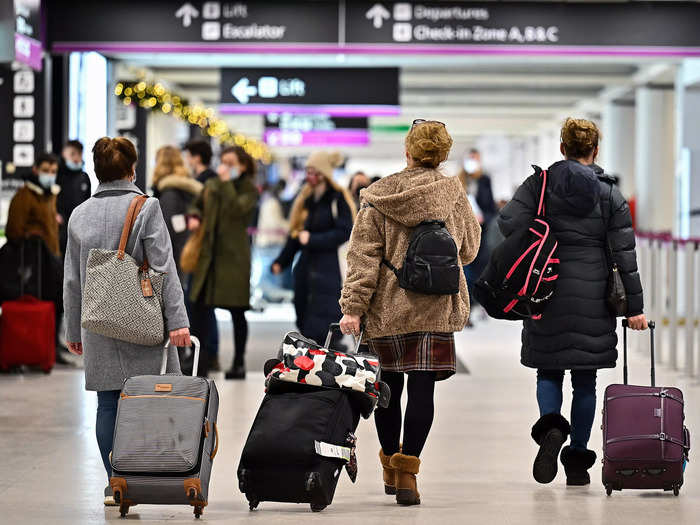
Passengers are seen at Edinburgh airport. Jeff J Mitchell/Getty Images
Operators are not only battling rising fuel prices, but also environmental concerns from world governments and activists, particularly as aviation-related CO2 emissions rise above 2%.
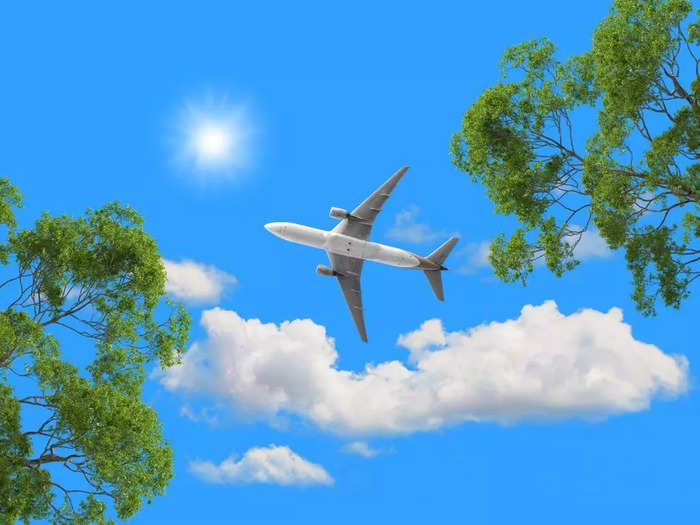
Airplane flying over trees. Gergitek Gergi tavan/Shutterstock
In November 2021, US Transportation Secretary Pete Buttigieg unveiled the country's plan to reach net zero emissions from the aviation industry by 2050.
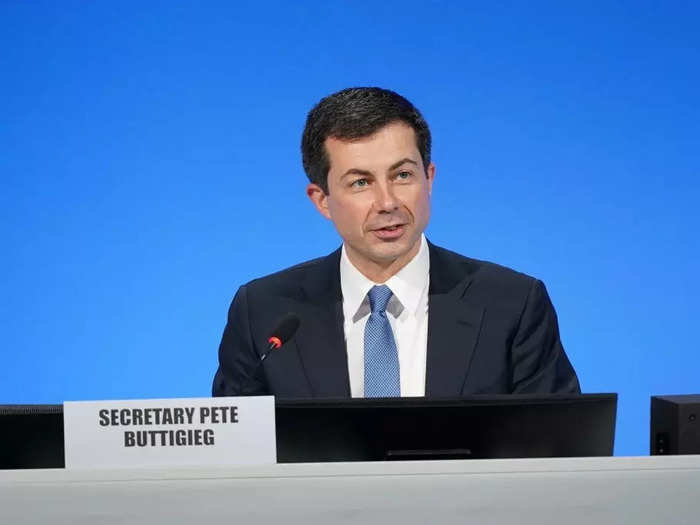
Buttigieg is taking an even more high-profile turn as he sells a trillion-dollar infrastructure package around the nation. He took his first international trip as a Cabinet member to COP26 in Glasgow last week. Photo by Ian Forsyth/Getty Images
Source: DOT
US carriers like Alaska Airlines and Delta Air Lines, among others, have accepted the net-zero challenge, particularly through sustainable aviation fuels.
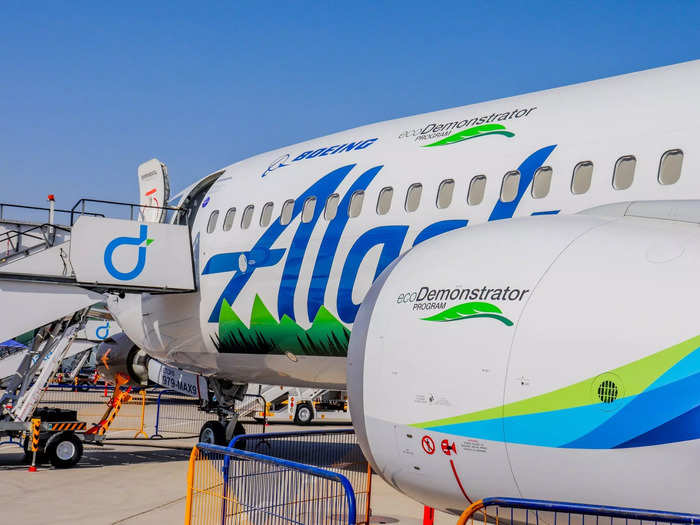
An Alaska Airlines Boeing 737 Max 9 EcoDemonstrator. Thomas Pallini/Insider
Source: Alaska Airlines, Delta Air Lines
Meanwhile, several manufacturers, like Boeing and General Electric, have engineered new systems to improve efficiency and performance on current products.
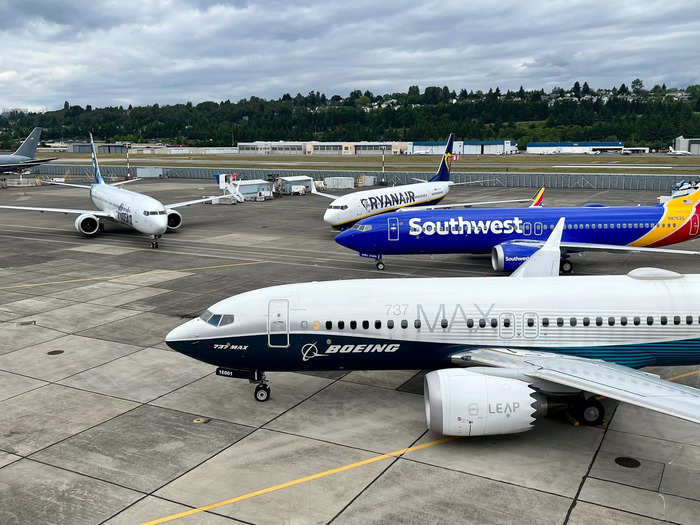
Taylor Rains/Insider
For example, Airbus has improved its best-selling A320ceo narrowbody jet with GE's next-generation LEAP-1A engine to create the A320neo, which reduces fuel burn by 20% compared to its predecessor.
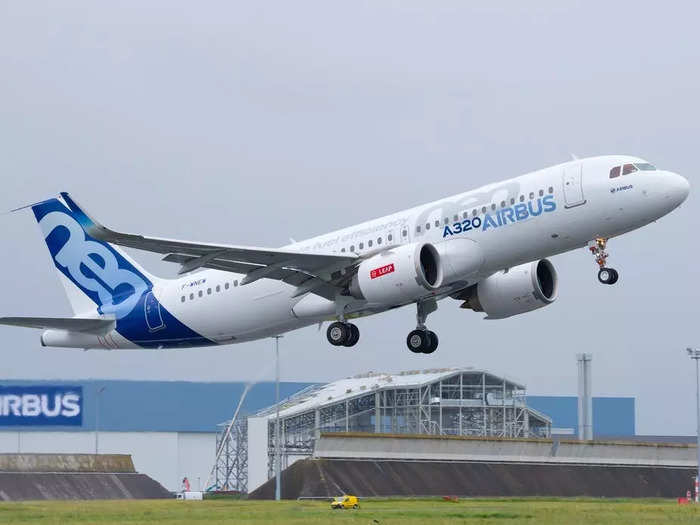
The fuel-efficient engine also reduces operating costs for airlines. Airbus
Meanwhile, Boeing is on its ninth ecoDemonstrator aircraft that tests concept technologies that could be introduced on new planes.
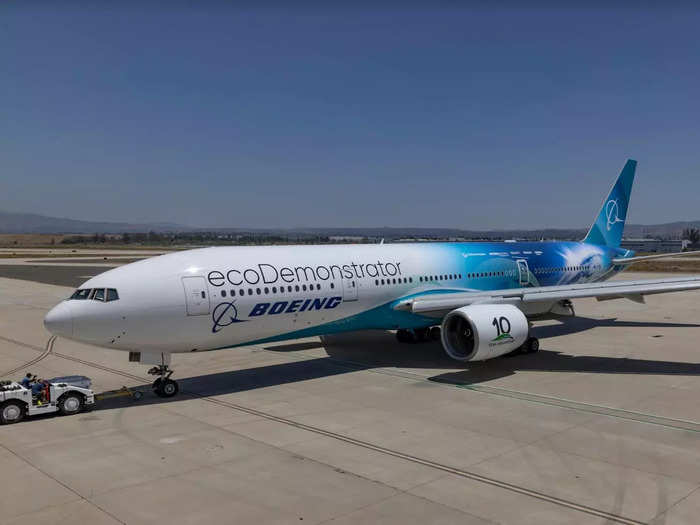
The Boeing 2022 ecoDemonstrator will test 30 technologies to enhance safety and sustainability. Shown here, the 2022 ecoDemonstrator – a Boeing-owned 777-200 ER (Extended Range) after being painted in San Bernardino, Calif., in June. Boeing
For example, this year's Boeing 777-200ER ecoDemonstrator is testing 30 new technologies, like a water conservation system…
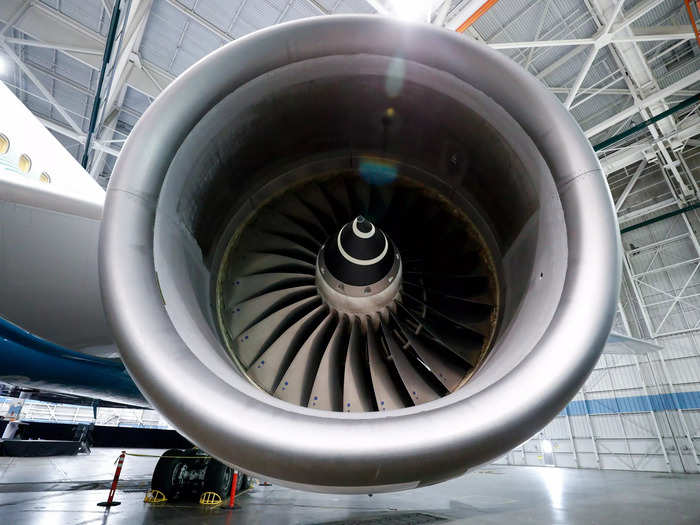
Seattle Times
…while Boeing's 2012 737NG ecoDemonstrator provided testing of the MAX's "advanced technology" winglet.
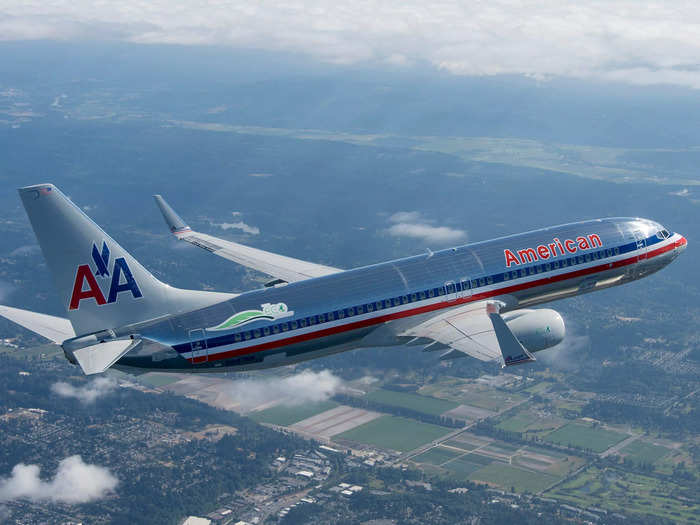
Boeing's 2012 ecoDemonstrator. Boeing
Source: Boeing, Air Insight Group
According to Boeing, the AT winglet is the "most efficient ever designed for a production airplane," with the 737 MAX 8 burning 8% less fuel per seat compared to the A320neo.
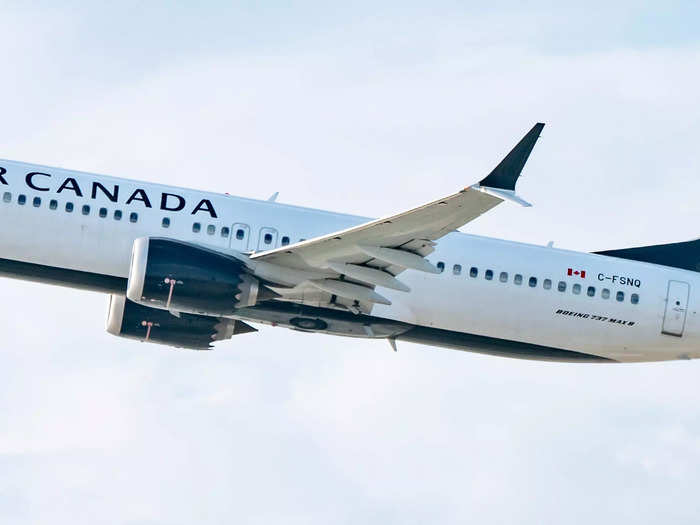
Air Canada Boeing 737 MAX 8 takes off from Los Angeles international Airport on July 30, 2022 in Los Angeles, California. AaronP/Bauer-Griffin/GC Images
Source: Boeing
While many innovations have already been created and implemented, the industry is still looking toward the future with outside-the-box technology.
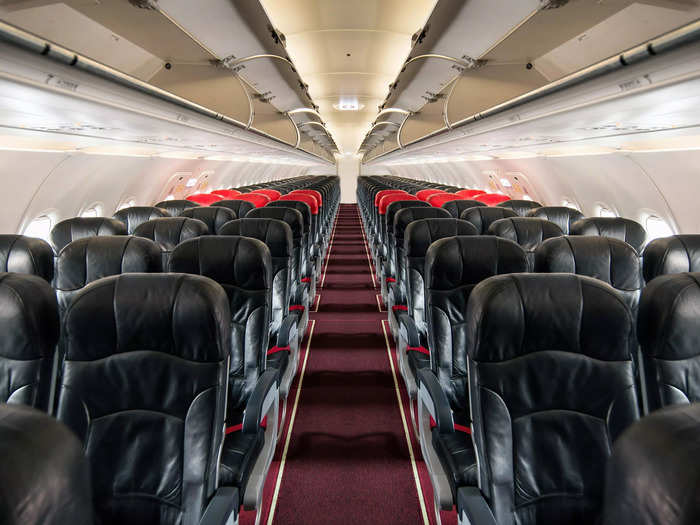
Empty airline seats. Getty Images
Zero-emission electric vertical take-off and landing aircraft and biofuels are proving to be the most popular solutions to the industry's CO2 problem.
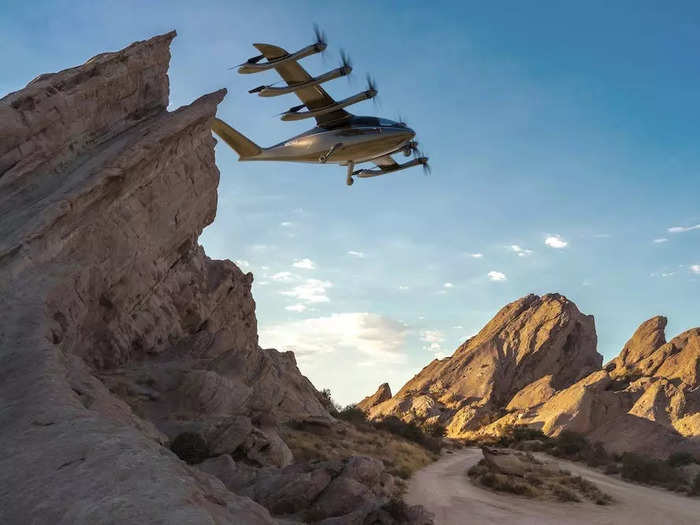
Archer Aviation
Moreover, eVTOLs are shaping a new way of travel between airports and congested city centers, while simultaneously reducing noise pollution.
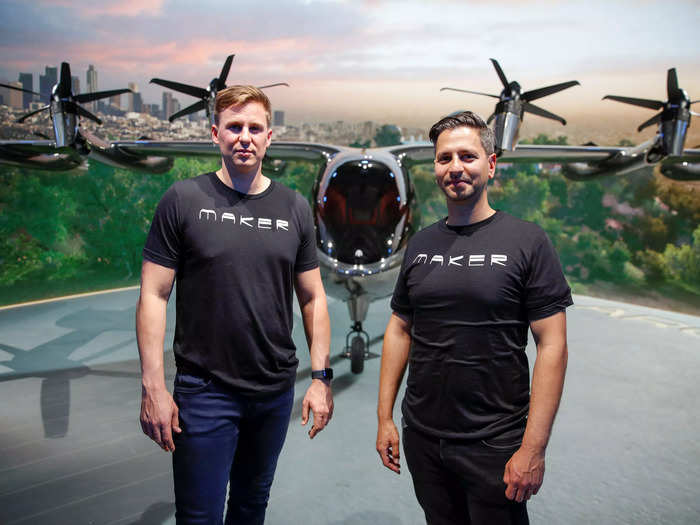
Reuters
But, the aviation sector may also see other revolutionary planes hit the market in the next decade or two, like supersonic and hydrogen-powered jets. Take a look at the aircraft of the future.
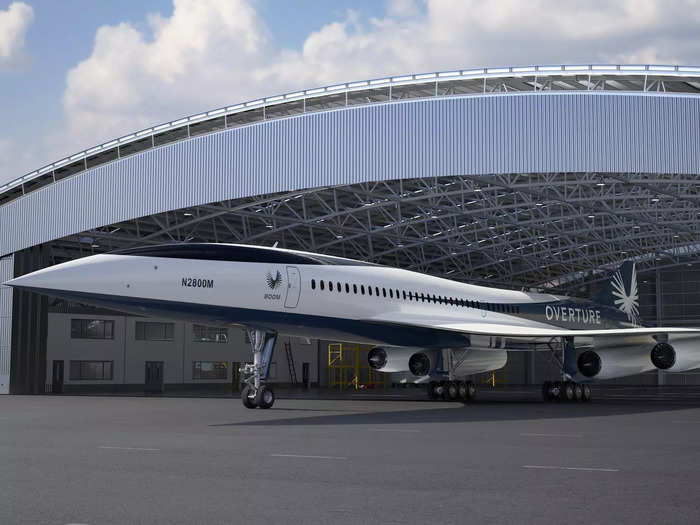
Boom Supersonic
Archer Aviation has partnered with United Airlines to create the US' first commercial electric air taxi route, flying between Newark Liberty International Airport and Downtown Manhattan.
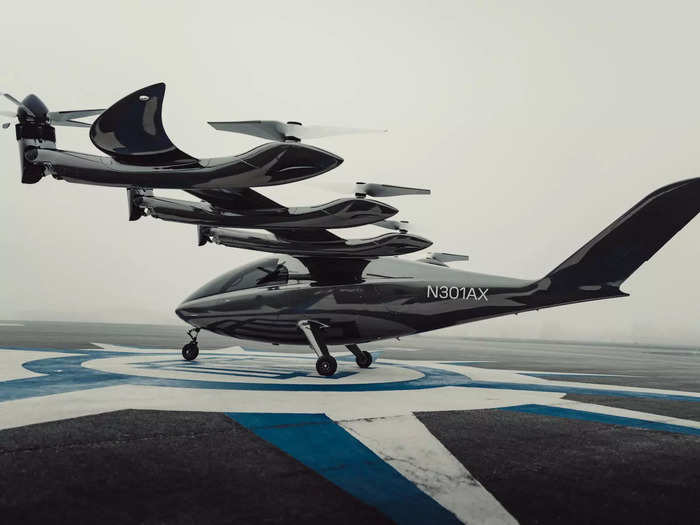
Archer Aviation
Source: Archer Aviation
The company's four-passenger Midnight eVTOL will power the route, which takes just 10 minutes from the airport to the city, according to Archer.
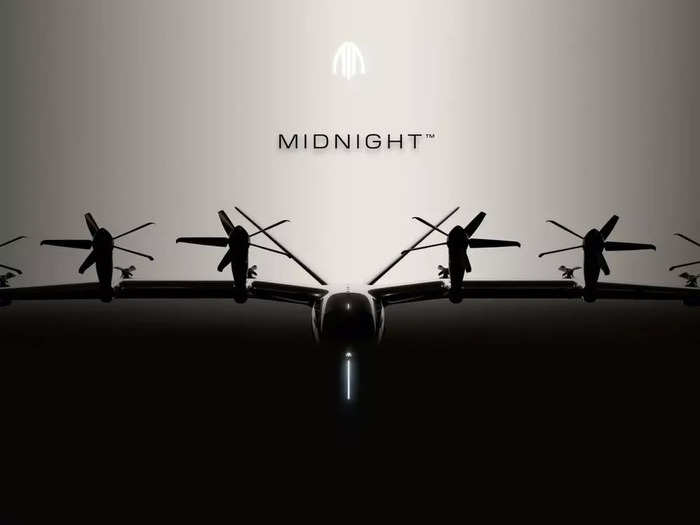
Archer Aviation Midnight. Archer Aviation
United has also placed a 100-strong order for another electric aircraft — Heart Aerospace's ES19 electric plane.
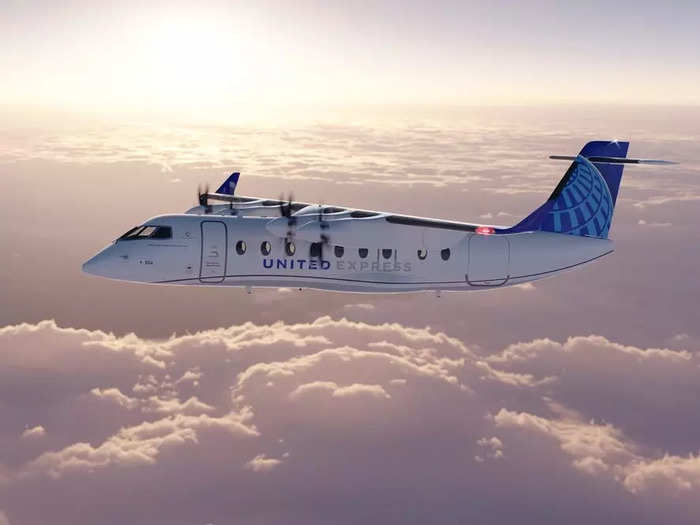
United Airlines and Heart Aerospace partner to develop an electric aircraft. United Airlines
Source: Reuters
The 19-seater aircraft is expected to enter service by 2026. The company also has a 30-seater variant that can fly up to 500 miles and has been ordered by Air Canada.
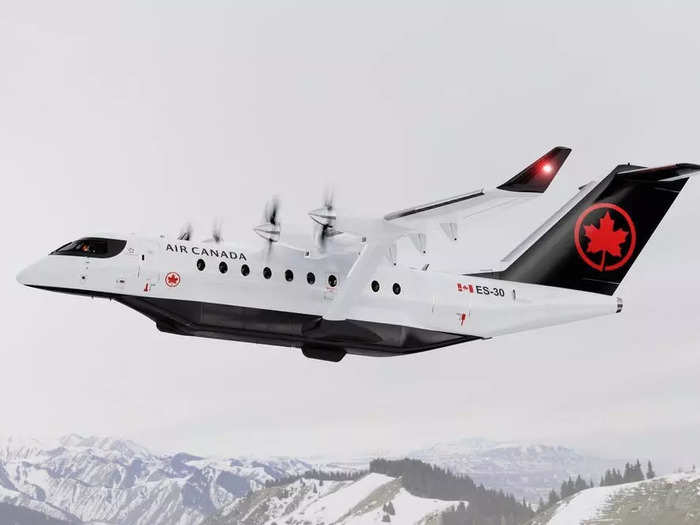
Air Canada
England-based Vertical Aerospace is another manufacturer in the race to reduce greenhouse gas emissions.
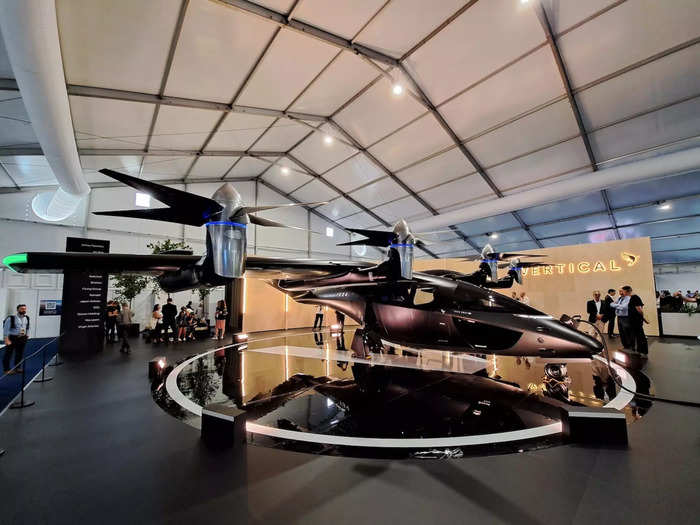
Stephen Jones / Business Insider
The company has created its VX4 eVTOL, which has amassed over 1,400 orders from carriers like American Airlines, Virgin Atlantic, and Air Asia. The aircraft is expected to enter service in 2025.
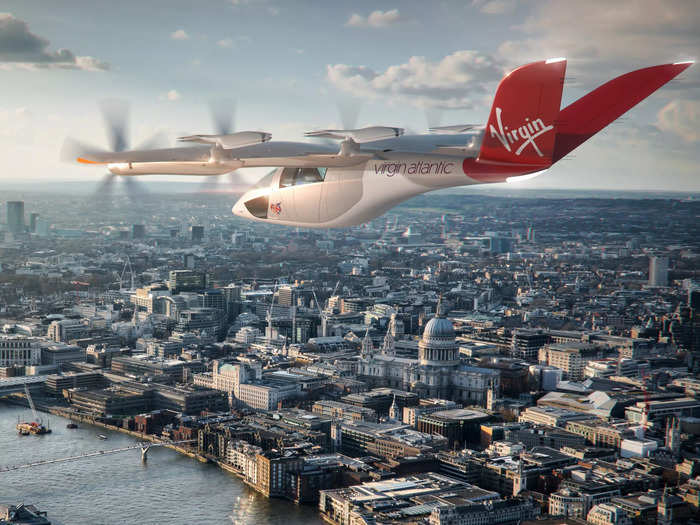
Virgin Atlantic VX4. Virgin Atlantic
In October, Delta made a $60 million investment in an air taxi — Joby Aviation's five-seater eVTOL.
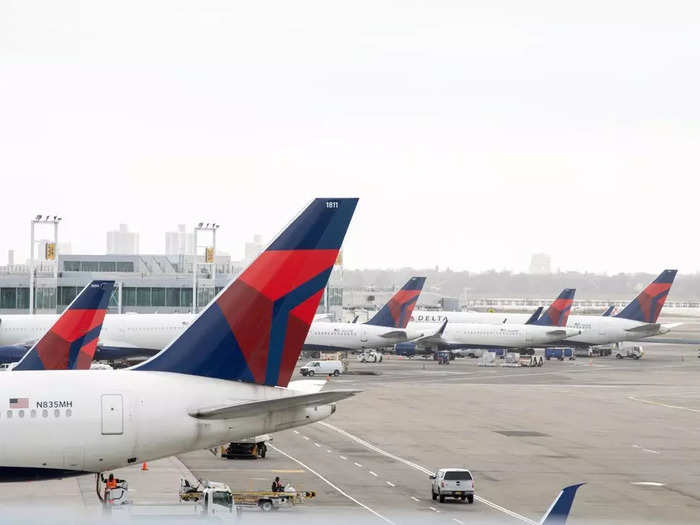
Delta Air Lines at JFK. Ron Adar/Shutterstock
The aircraft, which has a 150-mile range, has flown 1,000 test flights over 10 years, per the company, and is expected to enter service as soon as 2024.
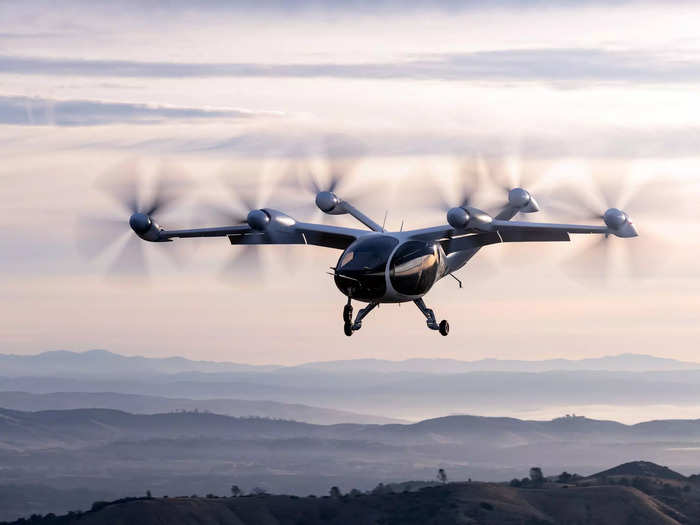
Delta Air Lines
Washington-based Eviation has completed the first test flight of one of the industry's newest electric planes — Alice.
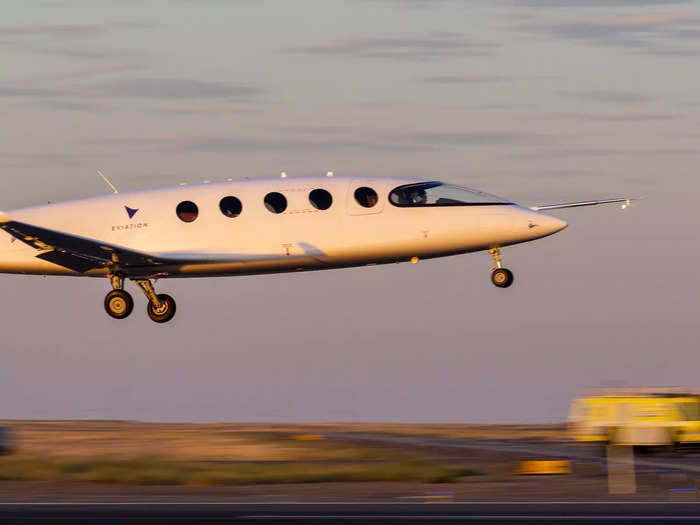
Eviation
The "proof of concept" aircraft will be zero-emission and fly up to 288 miles, according to the company. Cargo carrier DHL is the first to buy the plane with 12 on order.
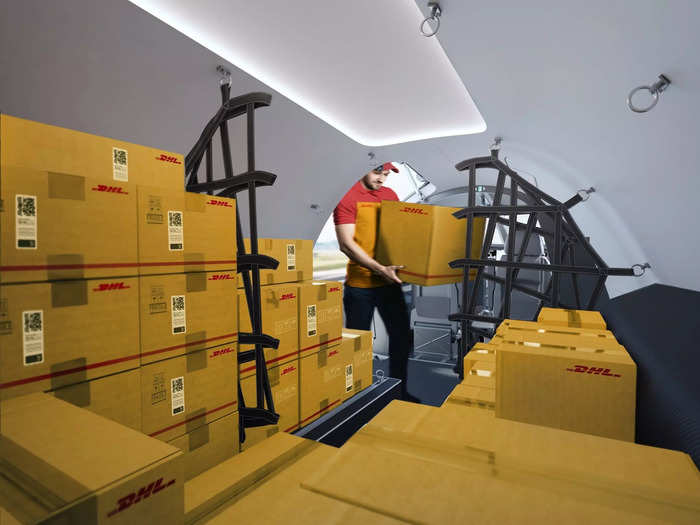
Interior of Alice as a DHL Express cargo plane. Eviation
Source: DHL
Brazil-based Embraer has founded its own zero-emission eVTOL startup called Eve Air Mobility.
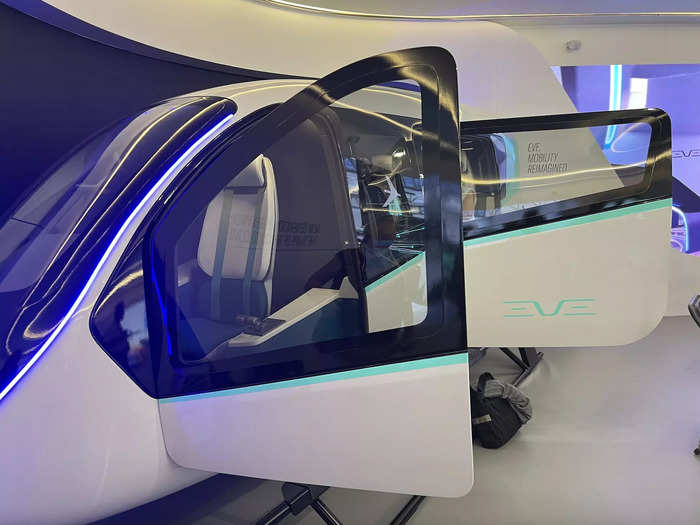
Taylor Rains/Insider
The four-seater air taxi has a backlog of over 2,000 aircraft, including 200 from United. The carrier expects the first Eve delivery by 2026.
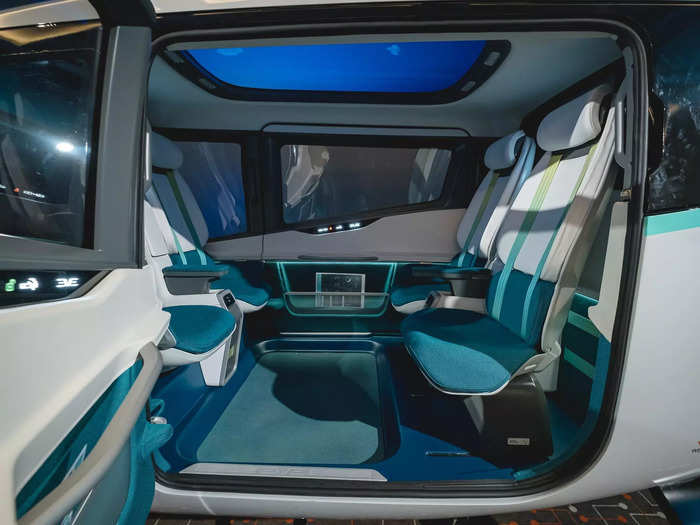
Inside the passenger cabin of Embraer-backed Eve, eVTOL. Eve Air Mobility
Embraer has also come up with another set of next-generation concept planes known as Energia that will feature different propulsion technologies, like electric, hydrogen fuel cell, gas turbines, and hybrid-electric.
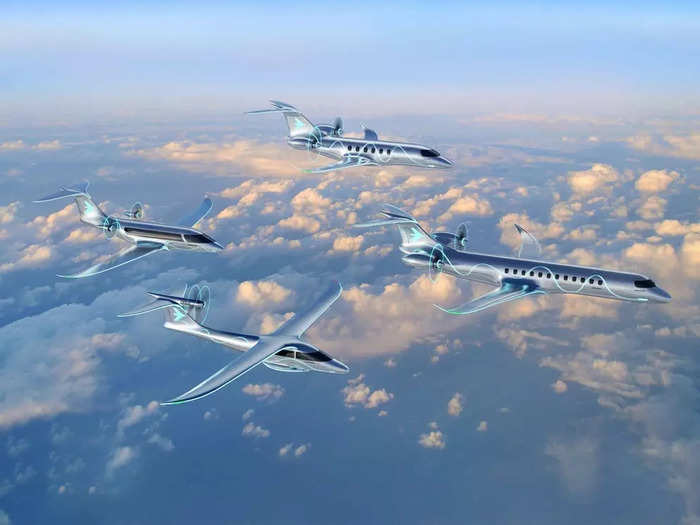
Embraer Energia aircraft. Embraer
Source: Embraer
These four low or zero-emission planes are designed to carry up to 50 passengers and are expected to enter service by 2030.
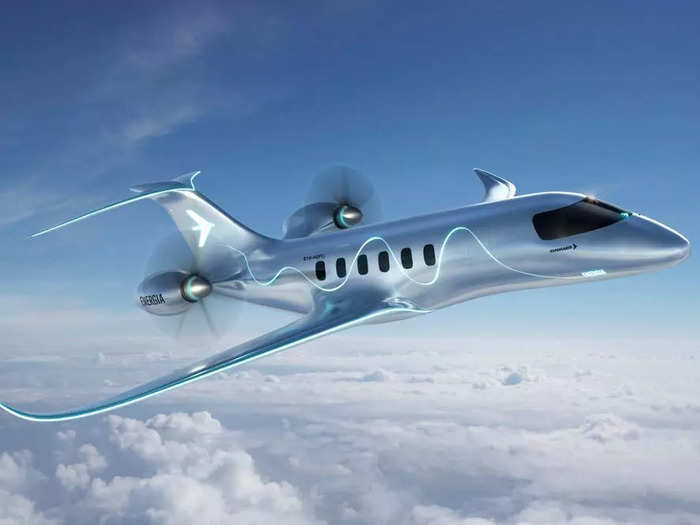
The Embraer Energia H2 Fuel Cell concept is being designed to run on hydrogen, or as a hybrid plane. Embraer
Source: Embraer
Another early-stage concept is Embraer's short-haul turboprop aircraft, which is being engineered to run on 100% SAF, have single-pilot operations, and carry up to 150 passengers.

Embraer new turboprop concept. Embraer
According to Embraer, the industry will need nearly 11,000 new aircraft with up to 150 seats over the next 20 years, and it is banking on its next-generation technology to meet decarbonization demands.
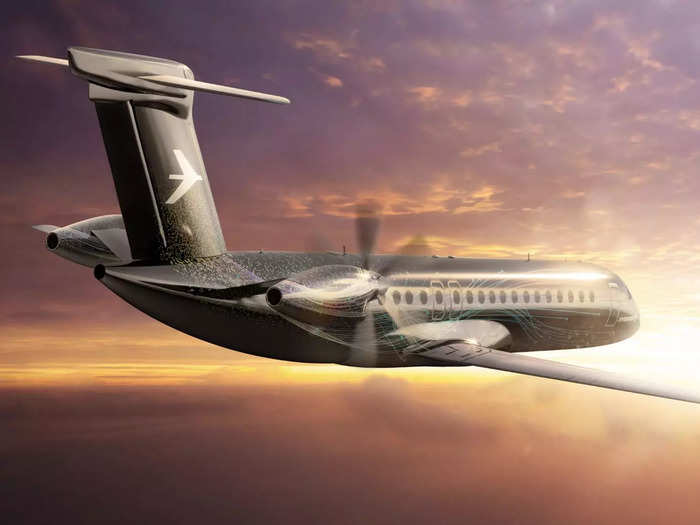
Embraer concept turboprop. Embraer
Source: Embraer
Embraer is not the only manufacturer with its eye on hydrogen-powered planes. Airbus has launched its ZEROe program, which will include three aircraft — a turbofan, a turboprop, and a blended wing.
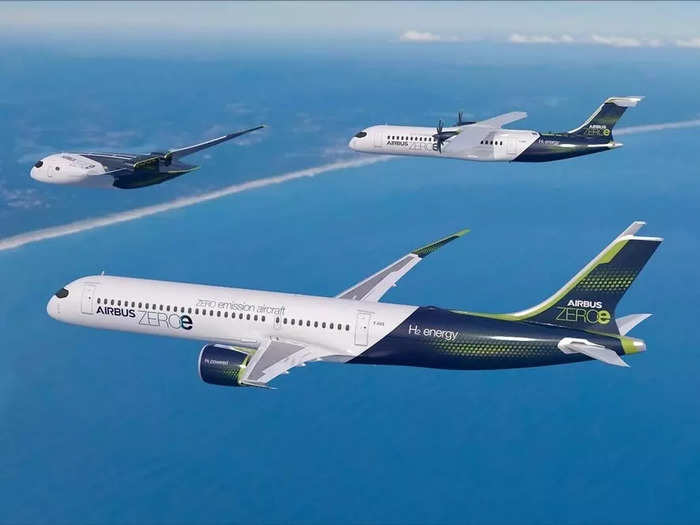
Airbus ZEROe planes. Airbus
The planemaker hopes to introduce the aircraft by 2035 and is using the mammoth A380 as its testbed for the technology. According to Airbus, all three planes are designed as hybrid-hydrogen.
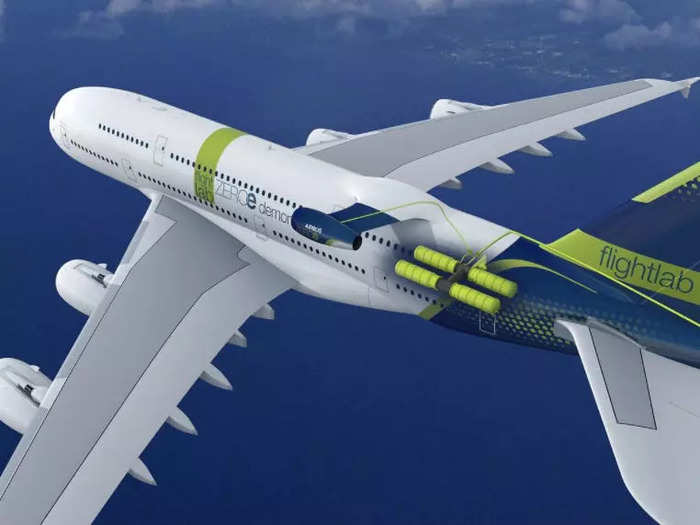
Airbus A380 ZEROe demonstrator. Airbus
Another futuristic technology is the Flying-V designed by engineer Justus Benad, who came up with the design during his time at Airbus Hamberg.
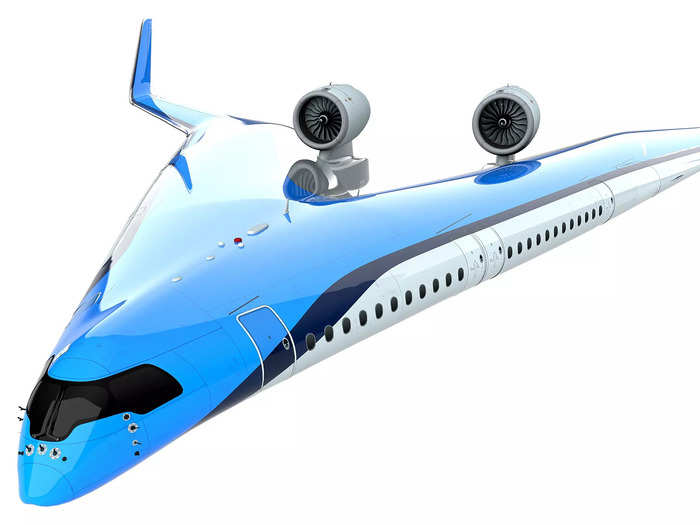
Flying-V concept drawing. Flying-V
Source: Flying-V
The wingspan is the same as an Airbus A350, and the passenger, cargo, and fuel tanks are all inside the structure, per the design. The aircraft's unique "V" shape reduces weight and drag, lowering costs.
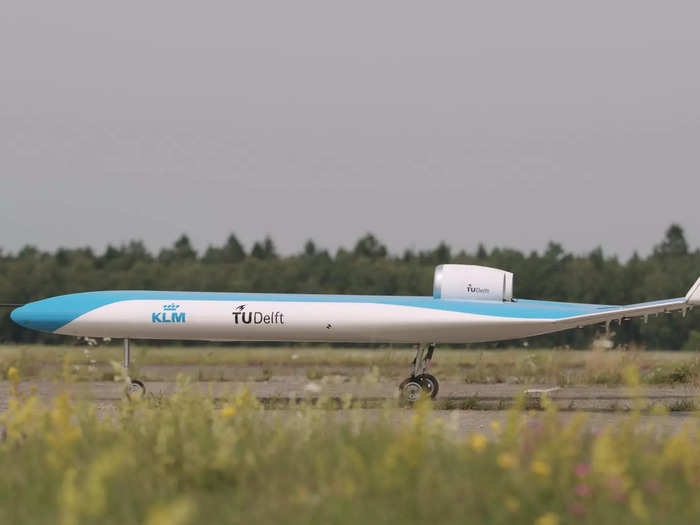
Flying-V scale model. KLM
Source: Flying-V
In partnership with Dutch flag carrier KLM, a small Flying-V prototype was developed by researchers at Delft University of Technology in the Netherlands and flew its first flight in the summer of 2020 in Germany.
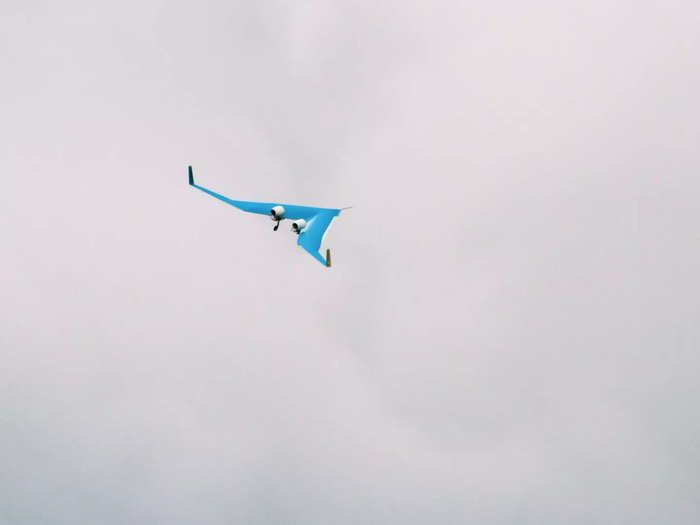
Flying-V scale model in flight. KLM
In addition to electric, V-shaped, and hydrogen-powered aircraft, one startup is hoping to fly faster than the speed of sound using 100% SAF.
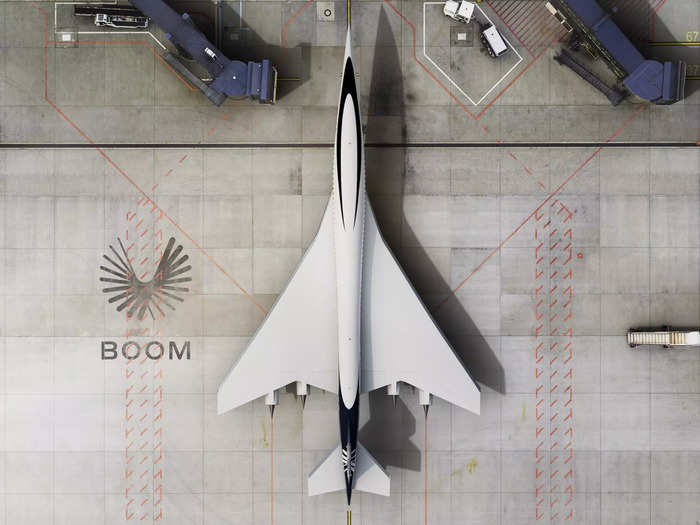
Boom Supersonic
Colorado-based Boom Supersonic is creating Overture — an ultra-fast plane designed to fly up to 1,300 miles per hour and connect New York and London in just 3.5 hours.
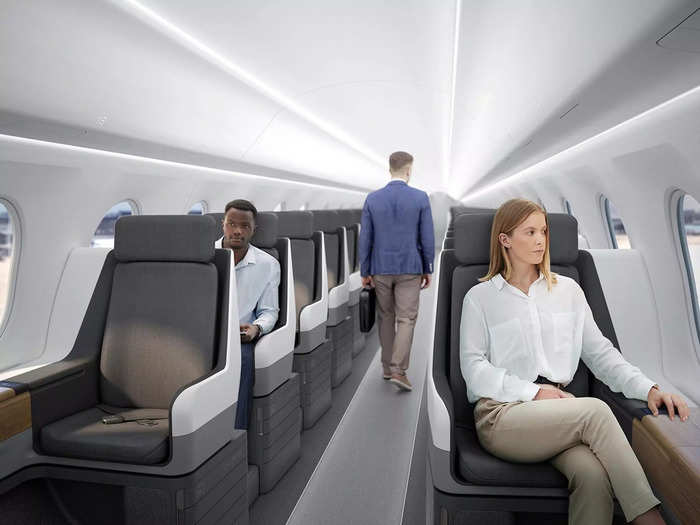
Boom Supersonic
Boom's 100% SAF goal means the jet could operate with net-zero carbon, per the company. So far, United, American Airlines, and Japan Airlines have invested in the jet.
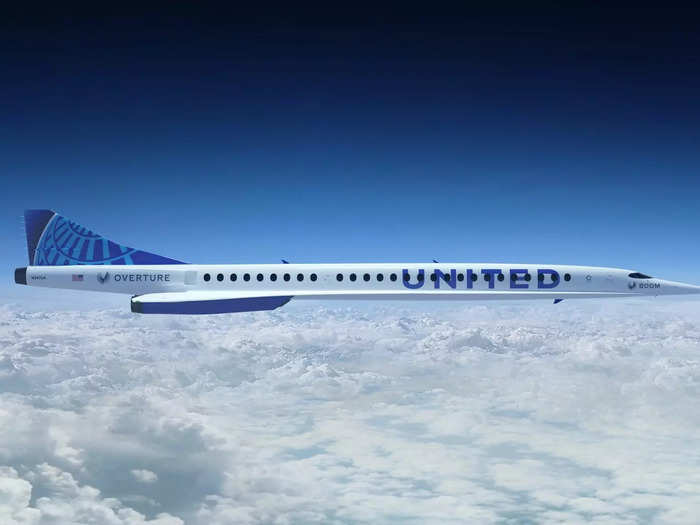
A rendering of a Boom Overture aircraft in United Airlines colors. Boom Supersonic
Popular Right Now
Popular Keywords
Advertisement